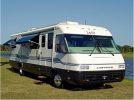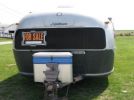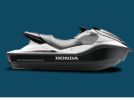Instructions For Riding A Motorcycle Part 1
So, you need instructions for riding a motorcycle? Well, you came to the right place. There is no doubt about it, riding a motorcycle can be fun. But, before you go off to have fun, understand that riding a motorcycle commands a great deal of respect,
because while it can be a lot of fun, it can also be very dangerous. If you approach riding a motorcycle with respect, then you will be taking a correct first step. Not only that, but in the end you will feel more secure knowing you are doing it the right way. Safely! It will even be more fun.
Before you trust your life to a motorcycle, take all the time you need to make sure the bike is roadworthy. Make sure it is safe to ride. After all, it is your life. Take a few minutes to check the tires. Make sure they are in good condition. Inspect your levers, cables, hoses, throttle and pedals. Make sure they are in good working order.
Check your light, battery, turn signals, mirrors and headlights. They should all be working. Make sure your fluid levels are where they should be. Make sure your chain, suspension and frame are in good condition. And finally, make sure your center stand or kickstand is working properly. Going down on a motorcycle hurts like_____, well, letâs just say you wonât be happy should that ever happens to you. You should understand that even at a very, very slow speed it is easy to seriously scrape yourself up. Your best bet is to dress for safety.
Wear protective clothing. There is nothing wrong with wearing gloves, boots and a helmet, which by the way, is the law in many states. You can check with the state you live in to see if it is the law there. Now that you are dressed for riding, letâs go riding a motorcycle!
Beginner Instructions For Riding A Motorcycle
If you happen to be short and your motorcycle happens to be tall, throwing your leg over it might be a problem for you. Hereâs what you do. Stand on the left side of the bike. Now lean in towards the gas tank and/or handlebars. This is just to get your balance. Now, lift you right leg up and over the bike. Be sure you clear everything and that your leg doesnât get caught on anything. Okay, congratulations, youâre on the bike. Now that you are straddling the bike, this will be a good opportunity for you to get âthe lay of the landâ so to speak. Check your mirrors and make any necessary adjustments. Checkout the foot pegs position. Find the light, horn and turn signals. Not every bike is the same, so get comfortable with the one youâre on. Being comfortable with the bike is, by far, much safer than just jumping on and riding right
off. You are probably wondering to yourself, âwhen am I going to get instructions for riding a motorcycleâ? The answer is, YOU ARE. The right way!
During the next couple of steps you will become familiar with your motorcycle. Youâll get comfortable with things like the brakes, clutch, shift peddle and throttle. Knowing exactly where they are and how they work will give you confidence when it comes time to use them. Your right hand is responsible for two crucial functions, acceleration and braking. Twisting the grip towards you accelerates. Make sure you do
this slowly, otherwise you might cause the bike to accelerate too quickly causing you to lose control. You might even cause yourself to go into an unexpected wheelie. I know this sounds âcoolâ, but you wonât think so if it happens. Now, your right hand also controls the front brakes. If you pull the lever too hard the brakes can âlock upâ causing the bike to skid and worst of all, crash. So the technique is to pull on the lever gently. Donât worry, after a few times you will get a feel for it.
Okay, so you have that down cold, so letâs move on. Your right foot operates the rear brake. Just be aware that when the front brakes are in use the rear brakes are less effective. Rear braking is more useful during reduced traction situations and at low speeds. In general, front braking is the most effective way to stop a motorcycle. The clutch is the lever just ahead of the left hand grip. Most sport bikes require just two fingers to pull on the clutch. Larger bikes will require the whole hand. Think of the clutch as a way to connect and disconnect the motor from the transmission. When you pull on the clutch lever you are effectively putting the motor in neutral. When you release the lever you are reengaging the motor with the transmission. When you let go,
you're enabling the engine to turn the transmission and in the event that the bike is in gear, turn the rear wheel. Practice pulling the clutch with your left hand. Do it slowly. Imagine that the clutch is a dimmer switch rather than an on/off switch. Following this advice, you will find that you will shift gears very smoothly. You will learn get more instructions for riding a motorcycle in Part 2 of this
article.










